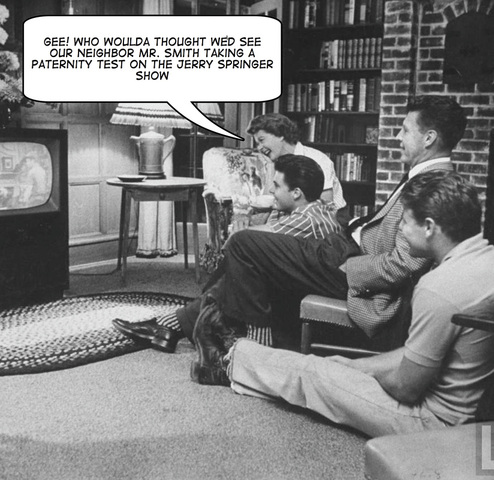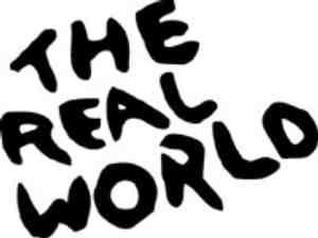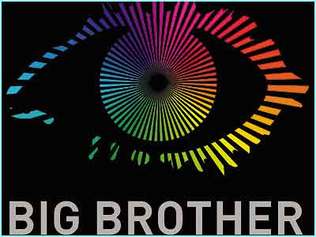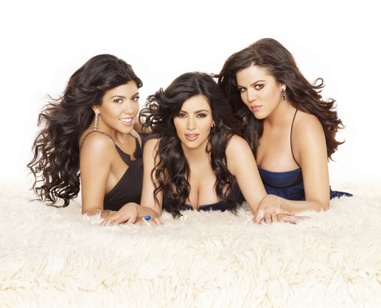Television
Celebrity culture has experienced much criticism, it is often seen as part of the" big bad manipulative mass media" and as an extension of consumerism culture. Celebrities authenticity is questioned, and this gave rise to the public's search for the "real", and beckoned the emergence of sincere entertainment and reality television. Producers and consumers of sincerity say the want to spotlight the beauty of life, using little of the sarcastic tone that permeates today’s culture1. As we look at television since the 1950's to the present we can see an important trend in "real media" and confessional oriented programming.
What is Reality Television?
First, it is important to define “reality television” as a genre and its evolution to its current form in order to fully understand its popularization and influence in contemporary media. The appeal of “real” television is traditionally based on the promise to provide access to the real, provide dramatic uncertainty, and cater to voyeurism. Early forms of reality television can be traced back to quiz formats in the 1950’s that catered to the appeal of placing real people in dramatic situations with unpredictable outcomes. Other precursors include makeovers and charity games such as “Queen for a Day” and “Strike it Rich”, staged pranks pioneered by shows such as “Candid Camera”, celebrations of ordinary people in unusual or unusually contrived situations such as “It Could Happen to You” and “Real People” and amateur talent shows4.
Daytime talkshows
Daytime shows in the late 80’s and early 90’s, began to anticipate “confessional” tendencies with TV guests and everyday drama similar to that seen in contemporary reality programming. Daytime talk show hosts and their producers may have schemed sensational ideas to keep their time slots, but why do we keep watching? I can think of two reasons. One, we are attracted to celebrity-based entertainment talk shows such as Live with Regis and Kelly and The Ellen DeGeneres Show because it gives us a glimpse of our favorite movie stars being themselves instead of a character they played on the big screen. Two, reality-based concepts like Dr. Phil and Jerry Springer are from two different sides of the spectrum, yet their use of supposedly real, non-scripted individuals triggers a curiosity to compare our own lives to those on the show5. The sofa on the daytime talkshows are analogous of the sofa at the psychologists office, where everyday people and celebrities alike sit and pour their heart and souls,but not to their therapist, but to the world. This concept has been proven fascinating to television audiences as daytime talkshows became highly popular in the ninties and continue to be an important part of television programming today.
What is Reality Television?
First, it is important to define “reality television” as a genre and its evolution to its current form in order to fully understand its popularization and influence in contemporary media. The appeal of “real” television is traditionally based on the promise to provide access to the real, provide dramatic uncertainty, and cater to voyeurism. Early forms of reality television can be traced back to quiz formats in the 1950’s that catered to the appeal of placing real people in dramatic situations with unpredictable outcomes. Other precursors include makeovers and charity games such as “Queen for a Day” and “Strike it Rich”, staged pranks pioneered by shows such as “Candid Camera”, celebrations of ordinary people in unusual or unusually contrived situations such as “It Could Happen to You” and “Real People” and amateur talent shows4.
Daytime talkshows
Daytime shows in the late 80’s and early 90’s, began to anticipate “confessional” tendencies with TV guests and everyday drama similar to that seen in contemporary reality programming. Daytime talk show hosts and their producers may have schemed sensational ideas to keep their time slots, but why do we keep watching? I can think of two reasons. One, we are attracted to celebrity-based entertainment talk shows such as Live with Regis and Kelly and The Ellen DeGeneres Show because it gives us a glimpse of our favorite movie stars being themselves instead of a character they played on the big screen. Two, reality-based concepts like Dr. Phil and Jerry Springer are from two different sides of the spectrum, yet their use of supposedly real, non-scripted individuals triggers a curiosity to compare our own lives to those on the show5. The sofa on the daytime talkshows are analogous of the sofa at the psychologists office, where everyday people and celebrities alike sit and pour their heart and souls,but not to their therapist, but to the world. This concept has been proven fascinating to television audiences as daytime talkshows became highly popular in the ninties and continue to be an important part of television programming today.
Oprah: The Queen of Confessional TV

Oprah Winfrey clearly found her place in daytime television by honing the concept of a “confessional” talk show. Beginning in 1986, Oprah banked in on tabloid-themed story lines such as “Alaskan men,” in which bachelors from Alaska were rounded up and brought to her show in Chicago. Eventually, Oprah transitioned to a more personal and socially conscience show that now includes celebrities, professionals, and volunteers as guests. The show is known to be revolutionary in airing issues that were traditionally kept behind closed doors. In addition to compelling issues on the show, Oprah herself was also very candid about her own personal life and viewers really responded to her honesty. Unfortunately, The Oprah show is currently in its last season, however the talk show queen has some bright successors such as Ellen DeGeneres and Tyra Banks who are plan on continuing their daytime shows for seasons to come.
Reality TV
It was not until the launch of MTV’s “The Real World” in 1991 that we began to see the emergence of reality TV genre as we know it today. The premise of the show was to place a young cast in an environment intended to ignite conflict and close contact, filled with cameras and surveillance to capture the action and encourage narrative development. The show was a pioneer in drawing in a young crowd to reality television and acted as a blueprint for proceeding shows such as “Big Brother” and “Survivor”. In addition, this further connects users’ reality to that of the show, fostering a stronger relationship between the consumer (viewer) and the product (media source). Through these means, Reality TV attempts to permeate into viewer’s personal lives. This strategy has been most effective amongst young people who are generally most active on the web.
It was not until the launch of MTV’s “The Real World” in 1991 that we began to see the emergence of reality TV genre as we know it today. The premise of the show was to place a young cast in an environment intended to ignite conflict and close contact, filled with cameras and surveillance to capture the action and encourage narrative development. The show was a pioneer in drawing in a young crowd to reality television and acted as a blueprint for proceeding shows such as “Big Brother” and “Survivor”. In addition, this further connects users’ reality to that of the show, fostering a stronger relationship between the consumer (viewer) and the product (media source). Through these means, Reality TV attempts to permeate into viewer’s personal lives. This strategy has been most effective amongst young people who are generally most active on the web.
Reality TV, The Celebrity & Converged Media
The increasing presence of reality television has had multiple societal implications, including changing the cultural discourse of “celebrity” and the relationship between the “celebrity” and the media consumer. In the past, while the celebrity was something mass audiences were encouraged to aspire to, the celebrity world was fundamentally removed from that of the audience and the explosion of reality television has contributed to the erosion of the normative and behavioral distinctions existing between the celebrity and everyday world.6 This trend can be seen for two main reasons. The first lies in the idea of how the nature of the celebrity created from reality television is fundamentally different to that of the traditional definition. Reality television often depicts the transformation of regular people into celebrities, and through programming content makes their every move worth the mass audience’s attention. Characters in reality TV shows are often average people who viewers can relate to on a personal level and this increases the proximity between the media consumer and the media figure. In addition, the fact that many shows include candid confessionals from the protagonists intensifies this perceived sense of proximity. The “celebrity” involved is not a superior entity but a fellow “average Joe/Jane” catapulted into fame through the star-making apparatus that is reality television. Consequently, this makes fame seem a more achievable pursuit for the average person, making viewers further identify with reality stars.
The increasing presence of reality television has had multiple societal implications, including changing the cultural discourse of “celebrity” and the relationship between the “celebrity” and the media consumer. In the past, while the celebrity was something mass audiences were encouraged to aspire to, the celebrity world was fundamentally removed from that of the audience and the explosion of reality television has contributed to the erosion of the normative and behavioral distinctions existing between the celebrity and everyday world.6 This trend can be seen for two main reasons. The first lies in the idea of how the nature of the celebrity created from reality television is fundamentally different to that of the traditional definition. Reality television often depicts the transformation of regular people into celebrities, and through programming content makes their every move worth the mass audience’s attention. Characters in reality TV shows are often average people who viewers can relate to on a personal level and this increases the proximity between the media consumer and the media figure. In addition, the fact that many shows include candid confessionals from the protagonists intensifies this perceived sense of proximity. The “celebrity” involved is not a superior entity but a fellow “average Joe/Jane” catapulted into fame through the star-making apparatus that is reality television. Consequently, this makes fame seem a more achievable pursuit for the average person, making viewers further identify with reality stars.
The second reason for the decreased divergence between the celebrity and everyday sphere is level of interactivity possible to reality TV users. The recent trend in reality television is that shows have complimentary websites for viewers to gain access to extra footage (such as 24 hour surveillance webcams), information and exchange ideas and commentary with other viewers through forums. According to the American Demographics, more than 25% of viewers read or post messages on sites devoted to reality TV shows, and 70% of self-described avid fans go to show related websites7. The increased accessibility to information regarding the show and the characters in it, along with the sense of technological-facilitated democratization created by encouraged participation increases active interactivity between the user and media. In addition, it further increases the perceived proximity between the reality TV celebrity and the viewer.
<<Previous back to top of page Next >>
<<Previous back to top of page Next >>
1 Luspa, Cristian. “Confessional culture' draws a crowd” The Christian Science Monitor (2007).CSMonitor.com http://www.csmonitor.com/2007/0131/p13s02-algn.html
4Murray, Susan, and Laurie Ouelette. "Introduction." In Reality TV: Remaking Reality Television. New York, New York: NYU Press, 2008. 1-23.
5Marsh, Amanda. "America's Obsession with Daytime Talk Shows." faculty.etsu.edu.http://faculty.etsu.edu/odonnell/2009fall/engl3130/studentessays/tabloidtv.htm (accessed December 1, 2010).Andrejevic, Mark . Reality TV: The Work of Being Watched. New York, New York: Rowman & Littlefield, 2004.
6Stefanone, Michael, Derek Lackaff, and Devan Rosen. "The Relationship between Traditional Mass Media and "Social Media": Reality Television as a Model for Social Network Site Behavior." Journal of Broadcasting & Electronic Media (2010):18.
7 Andrejevic, Mark . Reality TV: The Work of Being Watched. New York, New York: Rowman & Littlefield, 2004.
4Murray, Susan, and Laurie Ouelette. "Introduction." In Reality TV: Remaking Reality Television. New York, New York: NYU Press, 2008. 1-23.
5Marsh, Amanda. "America's Obsession with Daytime Talk Shows." faculty.etsu.edu.http://faculty.etsu.edu/odonnell/2009fall/engl3130/studentessays/tabloidtv.htm (accessed December 1, 2010).Andrejevic, Mark . Reality TV: The Work of Being Watched. New York, New York: Rowman & Littlefield, 2004.
6Stefanone, Michael, Derek Lackaff, and Devan Rosen. "The Relationship between Traditional Mass Media and "Social Media": Reality Television as a Model for Social Network Site Behavior." Journal of Broadcasting & Electronic Media (2010):18.
7 Andrejevic, Mark . Reality TV: The Work of Being Watched. New York, New York: Rowman & Littlefield, 2004.





